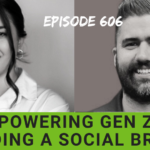One thing that I’ve noticed recently is the increasing traction behind the concept of talent experience. The reality is that employer brand, candidate experience, and employee experience don’t exist in silos when you are the employee experiencing them.
So what can employers do to ensure the kind of joined-up thinking that creates a seamless talent experience and, at the same time, develops workplaces that prioritise belonging and inclusion?
My guest this week is Charu Malhotra, a highly experienced global employer branding leader.
In the interview, we discuss:
- How employer branding is changing
- Why EVPs tend to get overshadowed by other employer branding outputs
- Joining up candidate experience, employee experience, employer brand, and EVP
- Moving culture and values from talk into action
- Inclusion, belonging and psychological safety.
- The importance of listening and two-way communication
- The role of technology
Subscribe to this podcast in Apple Podcasts








